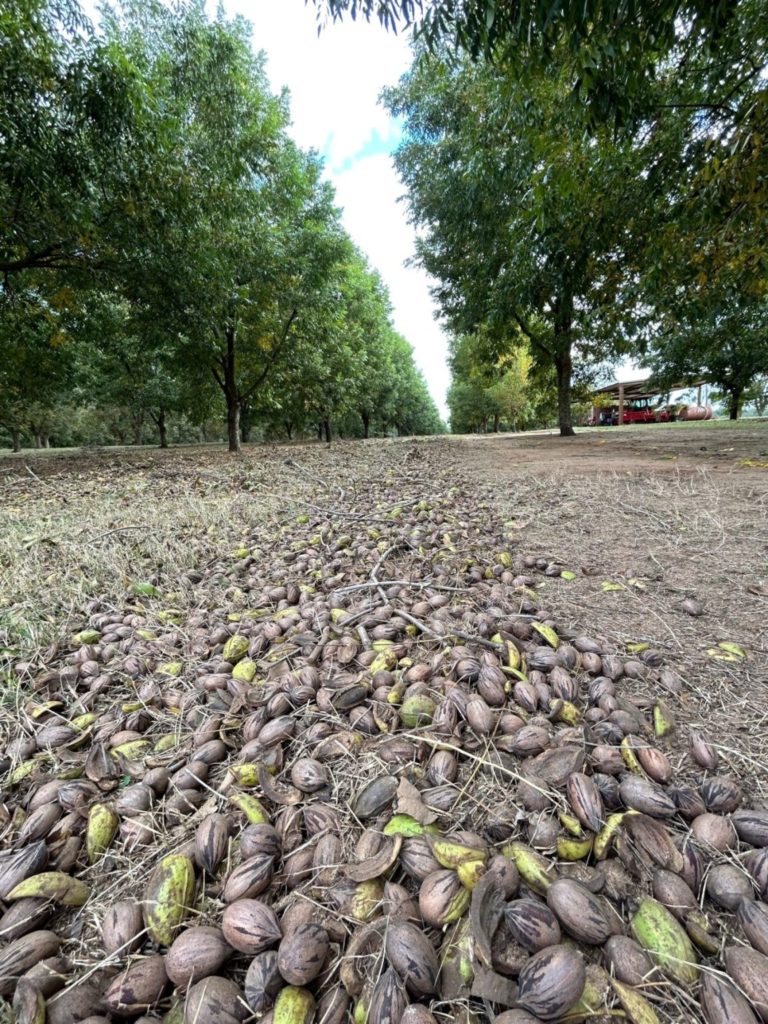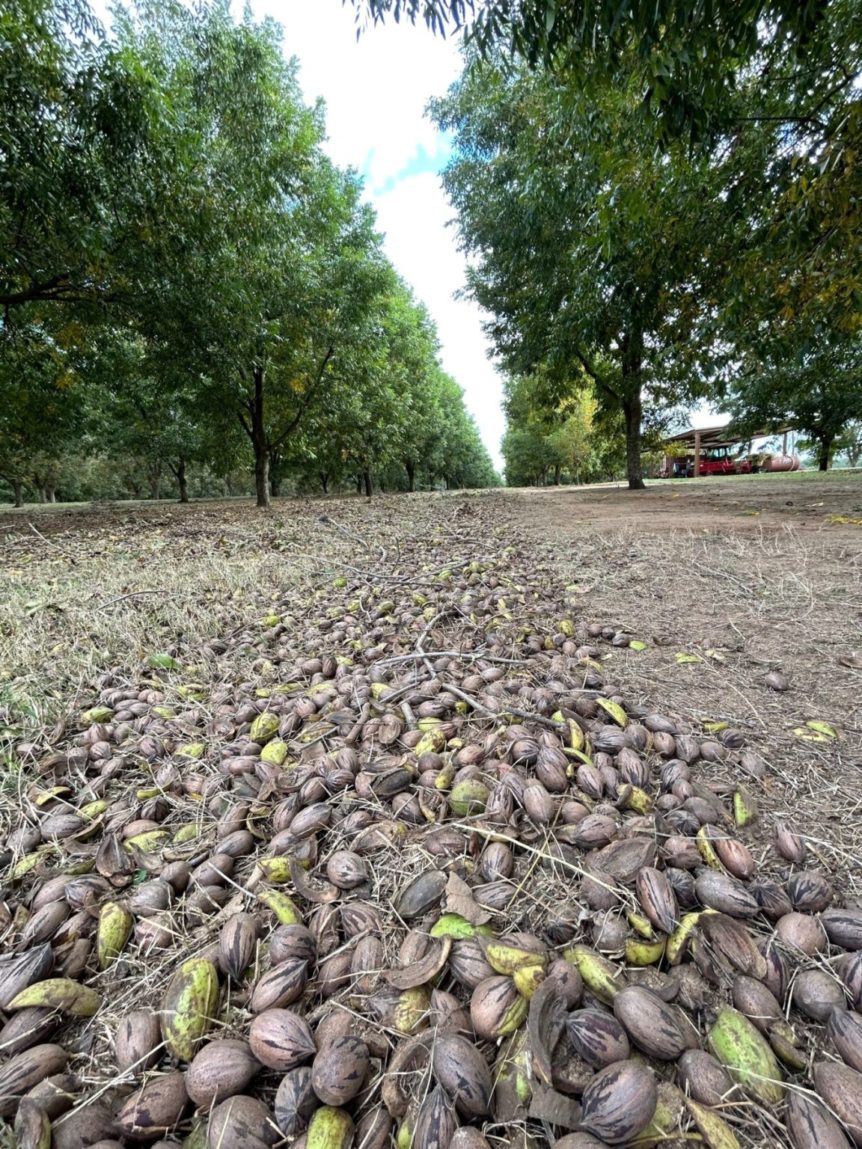
By Clint Thompson
Pecan producers should start revising their water usage, especially early in their tree’s history. An overabundance of water could stress the root system, which could make the trees vulnerable during high wind events, according to Lenny Wells, University of Georgia Extension pecan specialist.
“From the studies we’ve done looking at water use in pecans, we see certainly early in the season that they don’t need a lot of water. Especially for a young tree, we want to do a better job of developing that root system before we start pushing that tree,” Wells said. “One thing we’ve done a lot in the past is we’ve pushed that tree from the time it goes into the ground. When that happens, the top of the tree gets big, the above-ground portion of the tree gets big fast, but your root system is probably not growing adequately as it needs to, to be able to support that above-ground portion of the tree.
“That creates instability and makes it very easy for wind, especially a hurricane or tropical storm to blow trees down. That’s why we see those trees in the age range of 10 to 25 years old being the ones most likely to be blown down. They’ve got a big canopy but don’t necessarily have the root system that they really need to support that tree.”
South Georgia pecan producers only have to look to 2023 to see how a hurricane can devastate a pecan orchard. Hurricane Idalia significantly impacted pecan trees, especially in the southeastern part of the state.
Buck Paulk, one of the state’s largest pecan producers, located in Ray City, Georgia, lost 19,000 trees, the majority of which were less than 20-years-old.










